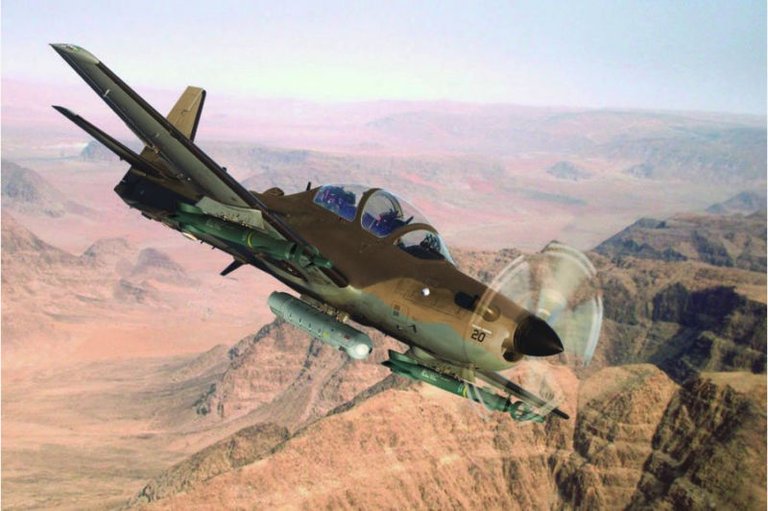
On June 22, an A-29 Super Tucano participating in the US Air Force's Light Attack Experiment (OA-X) program crashed while flying over the Red Rio Bombing Range—part of the White Sands Missile Range in New Mexico. US Navy Lt. Christopher Carey Short, from Canandaigua, New York, died in the crash. Another pilot ejected and suffered only minor injuries.
Further Reading
Air Force tests two turboprops as potential A-10 “replacements”
The Super Tucano, a joint entry into the OA-X program by Brazil's Embraer and Sierra Nevada Corporation, is one of two aircraft designs being tested as part of the second phase of OA-X by pilots attached to the Air Force's 49th Wing at Holloman Air Force Base. The goal of the testing is to determine whether the aircraft matches the Air Force's needs for flying close air support and reconnaissance missions for combat and counterinsurgency in "uncontested environments" (that is, operational areas where the enemy lacks air defenses). Such a niche is currently occupied by the A-10 and other more advanced aircraft.
Test flights
The flight over the Red Rio range was one of multiple scenario test missions, including close air support, combat search and rescue, and "armed overwatch" (combat reconnaissance). Both the A-29 and the other aircraft being flown in the OA-X tests—the Textron Beechcraft AT-6 Wolverine—are turboprop aircraft based on similar versions of Pratt & Whitney's PT6A-68 engine.
In a statement in May about the tests, Lt. General Amie Bunch of the Office of the Assistant Secretary of the Air Force for Acquisition said, "This second phase of experimentation is about informing the rapid procurement process as we move closer to investing in light attack. If we can get light attack aircraft operating in permissive combat environments, we can alleviate the demand on our 4th and 5th generation aircraft, so they can be training for the high-end fight they were made for.”
The air crews assigned to test the planes are a combination of fighter, attack, and special operations pilots, as well as test pilots and flight engineers from the Air Force, Air National Guard, and Air Force Reserve. All of the pilots, including Short, have previously served as instructor pilots on at least one aircraft. They average more than 1,000 hours of flight time and have all flown more than 100 combat missions.
"There's no way to to describe the shock of this loss and the sadness we feel for his family," said Col. Houston Cantwell, commander of Holloman's 49th Wing, eulogizing Short in an official statement. "He did pioneering work in aviation that will help shape American air power for years to come. We're thankful to have known him and grateful for his devotion to duty."
Too early for answers
The cause of the crash is still under investigation, and no preliminary findings have been released. In a statement, an Embraer spokesperson said, "The SNC/Embraer team is fully cooperating with the USAF in its investigation. Additional information will be released as it becomes available."
The Super Tucano has a safety record previously blemished by only two crashes since entering operation in 2003. A Colombian Air Force Super Tucano crashed during combat operations against FARC rebels in 2012; while FARC claimed the aircraft was shot down with a .50 caliber machine gun, the Colombian Air Force found no evidence that the aircraft had been downed by gunfire in an inspection of the wreckage. And in February of 2016, an Indonesian Air Force Super Tucano crashed into a house in Malang, East Java during a test flight after repairs, killing two people in the home; the pilot and a mechanic in the aircraft's second seat also died.
The A-29 won a previous Air Force acquisition competition (one that was overturned on a protest by competition rival Textron), and is already utilized as a combat aircraft by numerous air forces around the world, including the Afghan Air Force. In March, an Afghan A-29 made a strike against Taliban forces with the first laser-guided bomb ever used by the Afghan military (the ordnance was a US-manufactured GBU-58 Paveway II).
View article comments
Hi! I am a robot. I just upvoted you! I found similar content that readers might be interested in:
https://arstechnica.com/tech-policy/2018/06/air-force-light-attack-test-aircraft-crashes-on-bomb-range-killing-pilot/